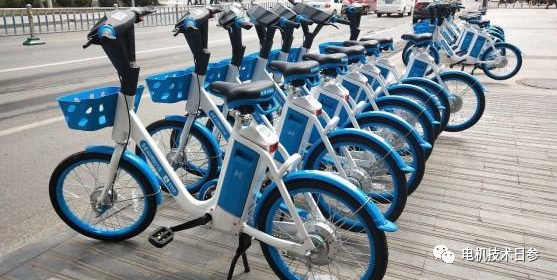Micro motor - what motor is used for electric bicycles?
For any very ordinary family, electric bicycles, range hoods, fully automatic washing machines, fully automatic soybean milk machines, food processors, sweat presses, hair dryers, shavers and other daily electric daily necessities have basically become a standard. It is not surprising that robotic daily necessities such as sweepers and massagers are more exquisite . It can be said that micro motors are full of our lives, and micro motors have also changed our lives!
An electric bicycle refers to a mechatronic personal vehicle that uses a battery as an auxiliary energy source, and is equipped with a motor, a controller, a battery, a steering handle, a brake handle, and other operating components and a display instrument system on the basis of an ordinary bicycle.
The most important accessory of an electric bicycle is the motor. The motor of an electric bicycle basically determines the performance and grade of the vehicle. Most of the motors used in electric bicycles are high-efficiency rare earth permanent magnet motors, which are mainly divided into three types: high-speed brush-tooth + wheel gear motor, low-speed brush motor and low-speed brushless motor.
The production license management of electric bicycle industrial products is converted to compulsory CCC product certification. The transition period is from August 1, 2018 to April 14, 2019. During the transition period, production licenses and CCC certification management coexist. In 2019 Before April 14, 2010, electric bicycle products should be delivered, sold or used in other business activities with a valid production license or CCC certification, and then they must be managed in accordance with CCC product certification.

The most important accessory of an electric bicycle is the motor. The motor of an electric bicycle basically determines the performance and grade of the vehicle. Most of the motors used in electric bicycles are high-efficiency rare earth permanent magnet motors, which are mainly divided into three types: high-speed brush-tooth + wheel gear motor, low-speed brush motor and low-speed brushless motor.
The motor is a component that converts battery electrical energy into mechanical energy and drives the electric wheels to rotate. There are many kinds of motors used in electric vehicles in terms of mechanical structure, speed range and electrification form. Common ones are: brushed hub motor with gear, brushed hub motor without gear, brushless hub motor without gear, brushless hub motor with gear, high disk motor, side mounted motor, etc.

The charger is a device for supplementing the battery with electric energy, generally divided into two-stage charging mode and three-stage charging mode. Two-stage charging mode: constant voltage charging first, the charging current gradually decreases with the rise of the battery voltage, and after the battery power is replenished to a certain level, the battery voltage will rise to the set value of the charger, and then it will switch to trickle charging. Three-stage charging mode: At the beginning of charging, first charge with constant current to quickly replenish energy for the battery; after the battery voltage rises, switch to constant voltage charging, at this time the battery energy is slowly replenished, and the battery voltage continues to rise; reach the end-of-charge voltage of the charger When the value is lower, turn to trickle charging to maintain the battery and supply the self-discharge current of the battery.
The power assist sensor is a device that detects the pedal force back to the pedal speed signal when the electric vehicle is in the power assist state. The controller automatically matches manpower and electricity according to the electric drive power, and jointly drives the electric vehicle to rotate. The most trendy power sensor is the central axis bilateral torque sensor, which is characterized by the ability to collect the pedal force on the left and right sides, and adopts a non-contact electromagnetic signal collection method, thereby improving the accuracy and reliability of signal collection.



























 XINDA
XINDA